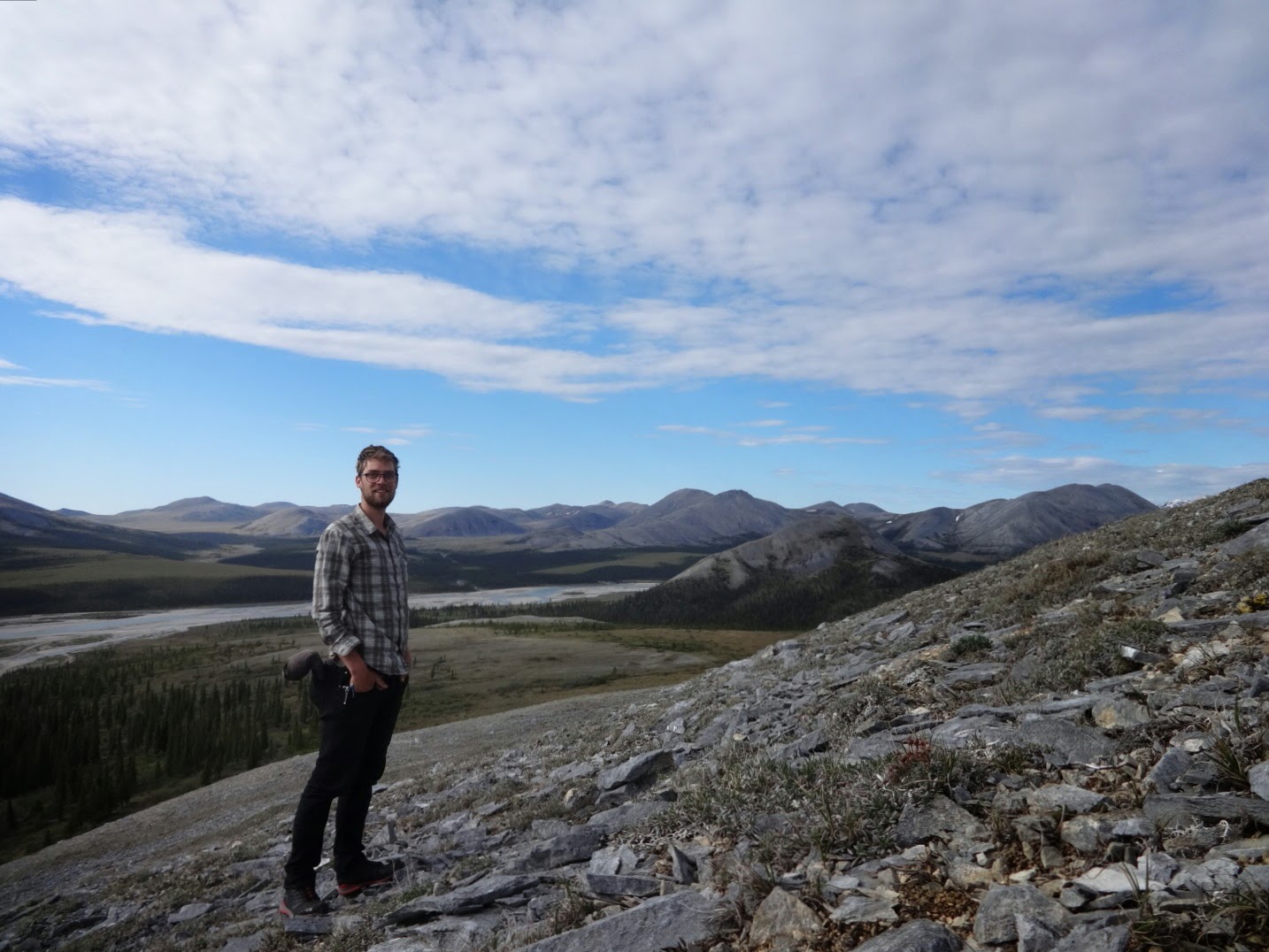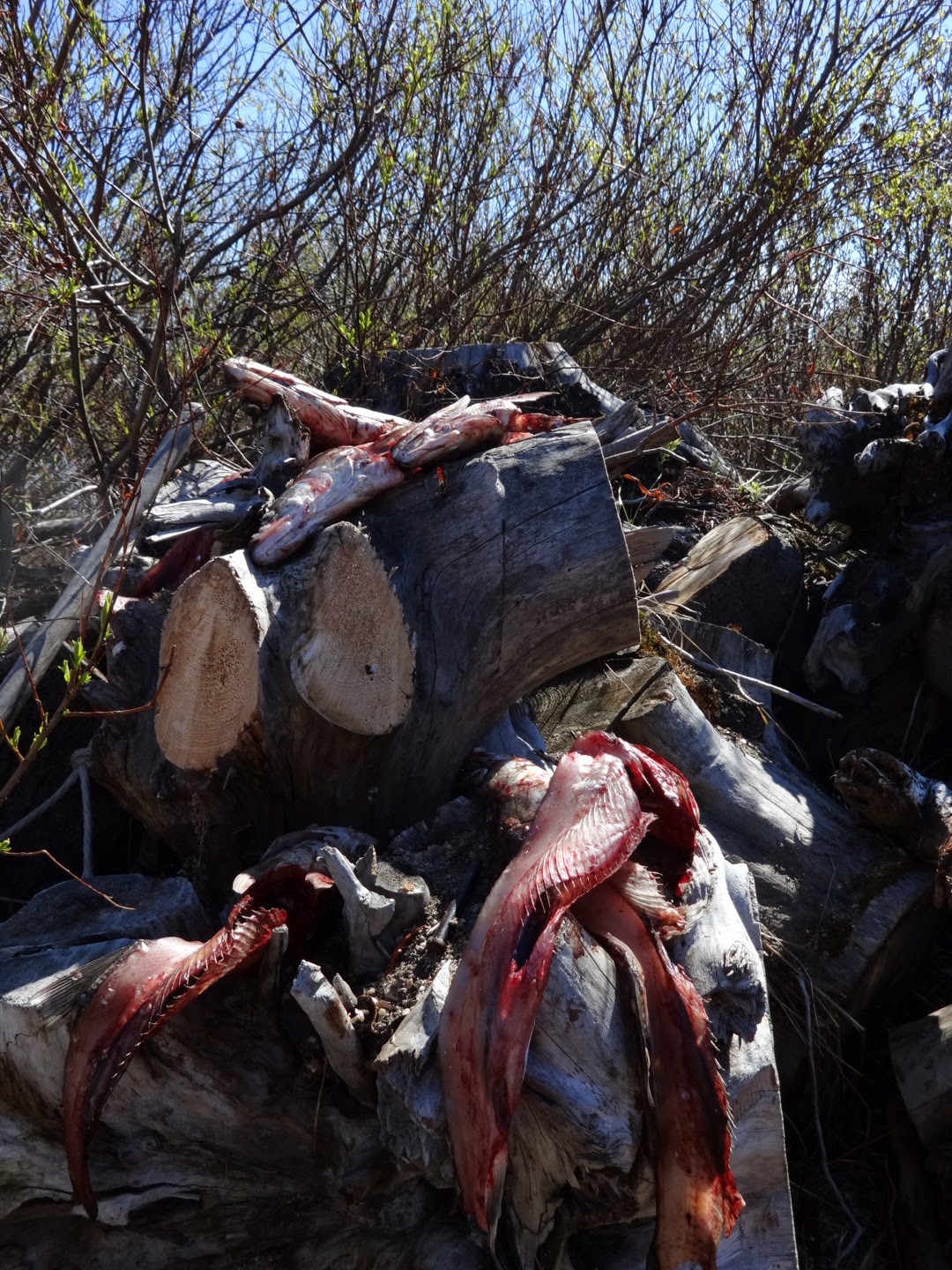Bear training began the day. I'm a novice with bears, to put it lightly, so the training was much needed. Watched a nice 1980 training film that was actually really helpful, giving good information on bear behavior and what each means and the proper reaction to take. Then came the guns. Twelve gauge shotguns. I won't be carrying one in the field but received the training anyway. So. Much. Kick. I shot with buckshot, not slugs, but that was enough. Managed to hit the bear target full in the heart and lungs with four shots 20 m away. A "charging bear" target was hooked to the back of a four wheeler by a rope that zooms the target towards the shooter. Sonny nailed this task easily putting three dead center of the bear. I didn't shoot at this one. Fish and Wildlife are a little strapped for cash and ammo so shooting at this target is reserved to qualify for your primary shooter certification.
From bear training to bush plane. Two first in one day. With Bob, Gwen, and I, our monitoring gear and camping supplies, it took two planes to shuttle us from Kotzebue to our site in the Noatak. Flying over the bay and to the foothills of the Brooks, the plane was bounced around like an beachball in the wind. Nothing nerve racking as the pilot didn't even have his hands on the controls, feeling free to let the plane bob and weave as it wished.
The views were incredible. From flat tundra of Selawik to rolling treed mountains of the Noatak. Able to spot a few bears from out the window on an elevated open tundra area.
A small gravel bar in the river was what the pilot had to work with for a landing strip but it seemed like a routine, if easy landing to him. No trouble at all. The planes were unloaded quickly, with the second arriving a few minutes later and bags were ferried quickly from its cargo area. Not much chit chat, time was settled for our pick up and then the planes were off. Out of sight and ear quickly, fading into the clouds closing over the small mountains.
Our campsite nesteled on the shores of the Agashashonk river. We camped on a gravel bar to try and keep the mosquitoes down as the wind is much stronger near the river. However, this ment we had to cross the river every morning to get to our sample locations. Bob and Gwen making the trip across before one of them has to come back and grab me.
The first day consisted of a short hike to lower spruce plots to dig out resin bags, take a few water samples, and gather soil samples. Not too strenuous of a day but the mosquitoes were out in force. A cloud follows you around, with them taking advantage of any patch of exposed skin.
The first few morning began cold and foggy, with temps dropping at night. Happy I went with the 20 degree bag and not the 30.I did wake up at around 1 am the second night and took a quick stroll around. The morning routine consisted of making some oatmeal, talking about research and varied topics with Bob and Gwen at the "mess tent" and outlining the plans for the day. We typically are not in too much of a hurry to get going in the mornings. Not like we have limited sunlight or anything. The third field day involved trekking further up to the second tier of spruce plots. My comfort in bear country is growing daily. We all make plenty of noise and have bear spray strapped to our shoulder bags but I am no longer afraid of running into a bear. Just cautious enough to hopefully prevent an encounter. Bob denotes that an encounter is any aggressive interaction with a bear. He says he hasn't had one in this area his whole time on the site.
Day four dawned with a big trek into the alpine, about a 7 hour round trip with sampling. Our path took us through stunted spruce, riparian zones with thick alder and willow, before emerging on high scree slopes of granite. A panorama looking back down our study site from the high alpine. Sneaking a photo of Bob on the high alpine, Gwen pulling out ressin bags, and me in my very stylish mosquito net.

Some of the best views of the entire trip to date. Panoramas in every direction with only a few light rain showers dampening the mood. We took our samples, trecked to the top to view the other side, a vast tundra littered with ponds that stretched until meeting the edge of the brooks range.
Following our day in the alpine, we had a lot of resin bags to process and soil samples to dry, keeping us in camp all day. The wind that typically kept mosquitoes from getting to bad failed to blow and Gwen, Bob, and I got swarmed. Doing lab work with your pants tucked into socks, shirt into underwear, and a headnet on was a new experience. Tip, thick socks DO NOT stop mosquitoes. I have the ankles to prove this point.
The one benefit of having a day in camp meant I could do a little hiking on my own in the evenings. I had been eyeing a route all week and decided to climb a nearby scree slope to check it out for next time Gwen and I travel to the Aggy. Everything looked pretty doable and got some really nice views of the valley in addition to checking out the longer hike.
Woke with a startthe second to last night in camp. My tent was shaking, there was a low rumble, but no wind. I was really confused about what was going on until the morning when Bob and Gwen said they heard it too. We had felt the shocks of an earthquake. I've never been somewhere quiet enough to hear one as it happened. It's almost like hearing the lowest register on a pipe organ. A smaller tremor happened again the next night and was a good sendoff to the first week of Noatack work.






























